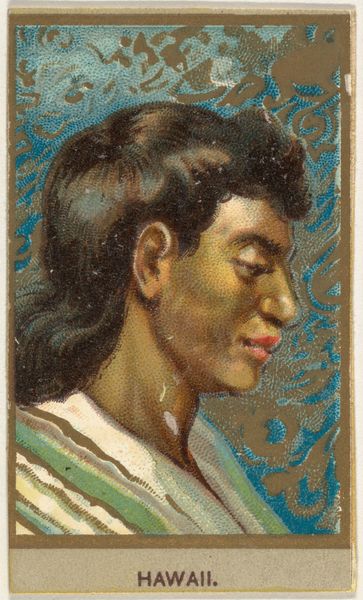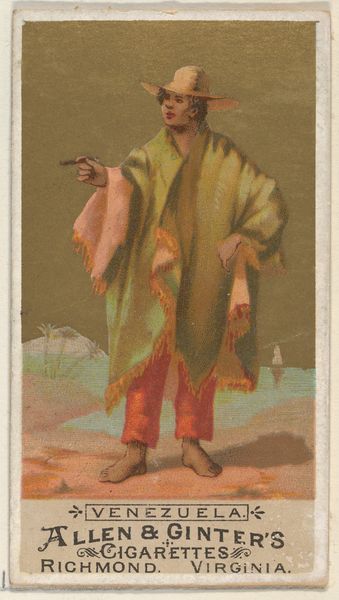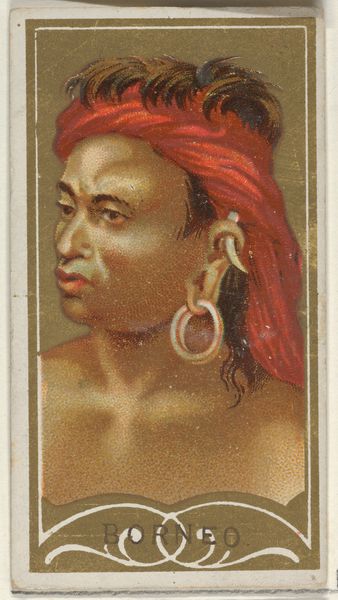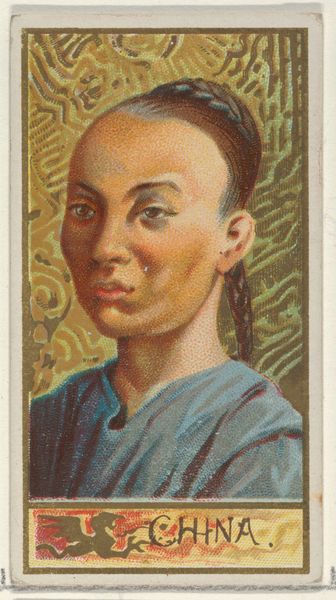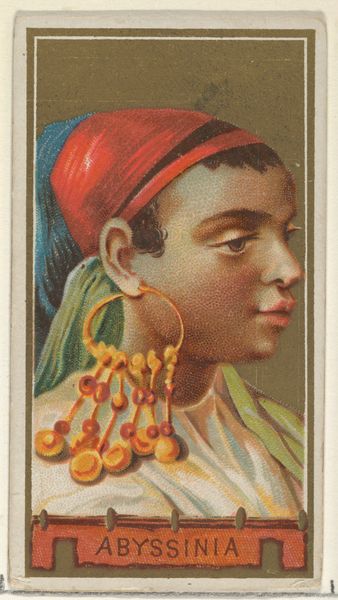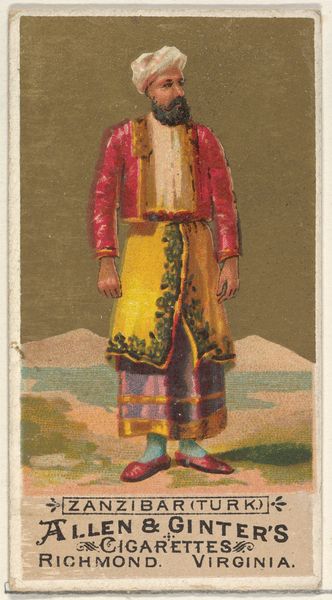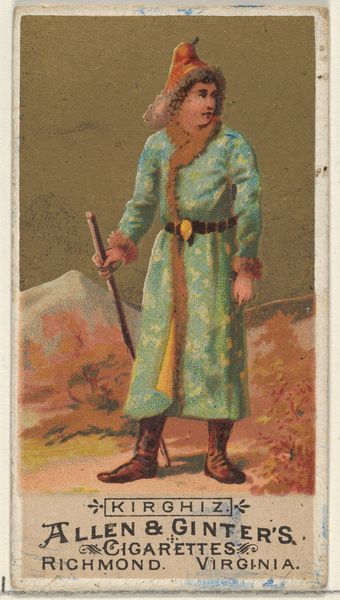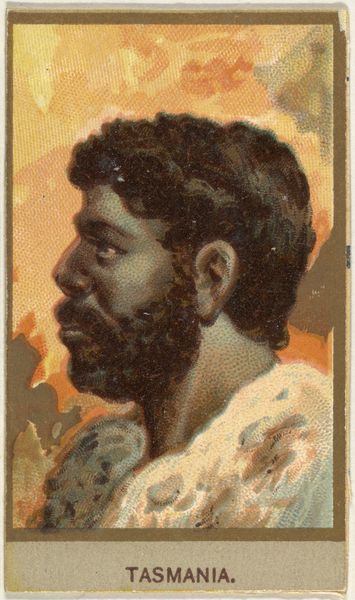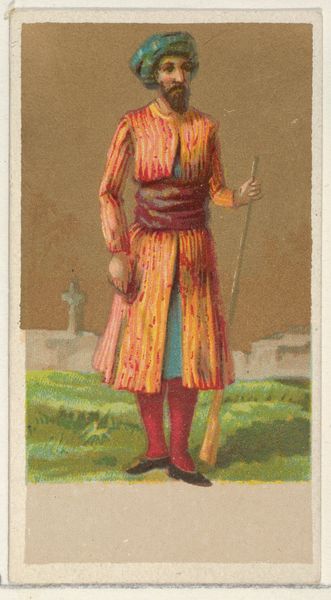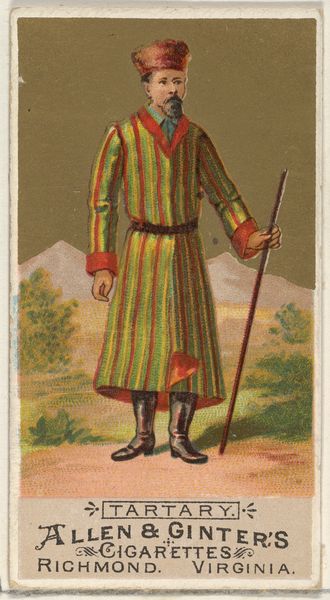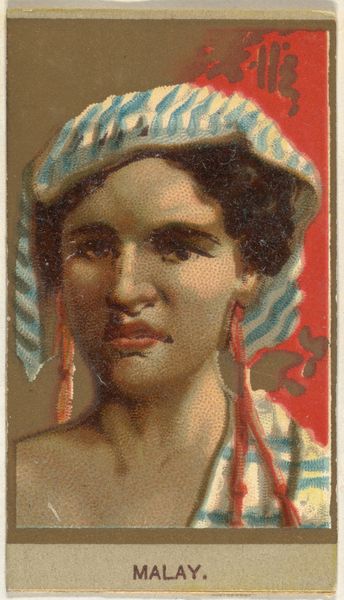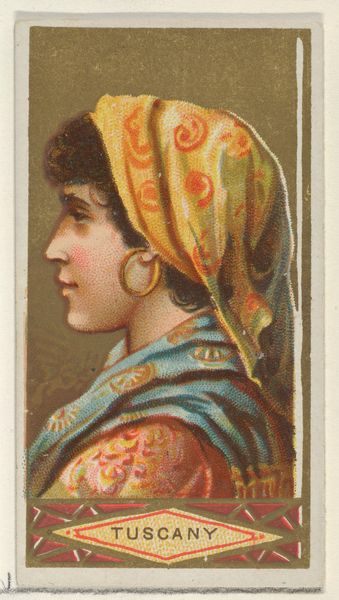
Hawaia, from the Types of All Nations series (N24) for Allen & Ginter Cigarettes 1889
0:00
0:00
drawing, print, etching, paper
#
portrait
#
drawing
# print
#
impressionism
#
etching
#
paper
#
portrait reference
#
men
#
portrait drawing
#
facial portrait
#
portrait art
#
watercolor
#
profile
Dimensions: Sheet: 2 3/4 x 1 1/2 in. (7 x 3.8 cm)
Copyright: Public Domain
Curator: Let's turn our attention to this small print titled "Hawaia, from the Types of All Nations series (N24) for Allen & Ginter Cigarettes," dating back to 1889. It's currently housed at the Metropolitan Museum of Art. What are your initial thoughts? Editor: My first impression is that it’s rather romanticized. The etching technique gives it a soft, almost dreamlike quality. But it's a tobacco card. How does the process relate to the subject, this individual portrayed? Curator: These cigarette cards were incredibly popular at the time, depicting a romantic vision of global cultures, each with its own set of visual cues and codes that played into Western audiences' existing expectations of identity and place. Editor: Absolutely. So, here we have this mass-produced image, likely created using industrial etching techniques for quick duplication, presented as a glimpse into an exotic culture. It is fascinating to consider the labor involved in producing these items against the backdrop of an indigenous portrait. Curator: Exactly! It underscores the way such images helped construct ideas of "the other" during an age of imperialism and growing global trade. There's a quiet exoticism embedded, one designed to sell cigarettes with visual shorthand that assured certain perceptions. Editor: And what about the paper itself? These cards were made to be discarded, collected, traded. The transient nature of the medium clashes with the seemingly timeless depiction of the man. Were they painted? Were they etched and then mass produced? Curator: These cards utilized chromolithography which enabled a heightened degree of colorful detail at scale. Considering its creation alongside a specific type of colonial capitalism adds weight. Its impact lies not only within aesthetic experience, but also how people once engaged with its associated social frameworks that continue resonating still today! Editor: So, it's an intimate portrait embedded within systems of material production and consumption. Looking closely really reveals this intersection of representation, material, and social life. Curator: Precisely! Visual, cultural, and social meaning were all woven together in surprising ways back then - the print offers only but a portal towards exploring many connections between consumer goods, colonial desires and more across this ever interconnected history!
Comments
No comments
Be the first to comment and join the conversation on the ultimate creative platform.
